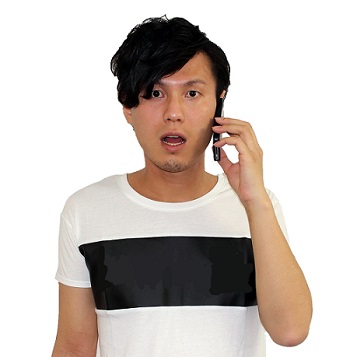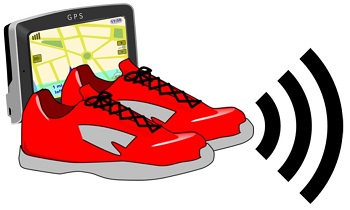The image depicted a SmartBand Talk as well as a SmartWatch 3 ahead of their official unveiling.
A render has leaked at Sony and has possibly unveiled completely new designs for the SmartWatch 3 wearable technology, which was expected to be officially unveiled at the IFA 2014.
The image also depicts another type of wearable device, the SmartBand Talk, with an e-ink display.
That second wearable technology is completely new from the brand and looks to be the latest fitness tracker that will also provide the wearer with notifications on its display. There have already been two generations of Sony SmartWatch, and they have both looked quite similar to each other. That said, the latest version that was depicted in the render looks as though it is an all plastic form, instead of the previous metal design.
That wearable technology may also be running on Android Wear, according to the render.
 This goes against previous reports that have suggested that Sony would be using its own SmartWatch operating system for its next smartwatch release. If that turns out to be accurate, it will help to boost the competitiveness of the SmartWatch 3 against such rivals as the Samsung Gear Live and the LG G Watch. Among some of the other specs for the device that have been taken from the leak are the 1.68 inch display that reportedly has a resolution of 320 by 320. Moreover, it also appears to have IP58 water resistance.
This goes against previous reports that have suggested that Sony would be using its own SmartWatch operating system for its next smartwatch release. If that turns out to be accurate, it will help to boost the competitiveness of the SmartWatch 3 against such rivals as the Samsung Gear Live and the LG G Watch. Among some of the other specs for the device that have been taken from the leak are the 1.68 inch display that reportedly has a resolution of 320 by 320. Moreover, it also appears to have IP58 water resistance.
The SmartBand Talk, on the other hand, will come with Bluetooth connectivity, and it will have an e-ink display that is curved. Those are the full extent of the details that could be obtained regarding those wearables from the render. The name of the device suggests that it will also provide certain notifications for the wearer or could also allow an owner to make calls as is the case of the Samsung Gear. However, that is only a guess based on the product name.
The true nature, existence, and specifications of both of these wearable technology devices are all expected to be revealed at the IFA in Berlin.
Denny |
September 5, 2014
As smartwatches rise in popularity partly for use as a fitness tool, there is now footwear designed to do the same.
A company from India has now entered the wearable technology market not with the typical fitness band or smartwatch device, but with a pair of shoes that are enabled with GPS tech to help to provide wearers with directions.
These red sports shoes will become available for purchase later on in September.
Consumers interested in purchasing this wearable technology will need to look for vibrant red sneakers called LeChal, which is a Hindi term that means “take me along”. Aside from providing directions to the wearer through its GPS, these shoes also work as a pedometer, counting steps, and will estimate the number of calories that are burned by a workout or in a given day.
This wearable technology also includes a Bluetooth transceiver that is detachable from the shoes.
 The Bluetooth feature on these wearables allows the shoes to connect to a smartphone app that uses Google Maps. This way, the wearer can receive indications as to whether he or she should turn left or right. The shoes vibrate to signal to the wearer that he or she should turn in one way or the other.
The Bluetooth feature on these wearables allows the shoes to connect to a smartphone app that uses Google Maps. This way, the wearer can receive indications as to whether he or she should turn left or right. The shoes vibrate to signal to the wearer that he or she should turn in one way or the other.
The LeChal shoes are the creation of Anirudh Sharma, 28 and Krispian Lawrence, 30. These are two engineering graduates who began their startup company, Ducere, back in 2011. It has experienced rapid growth and is now the employer of 50 people. The company decided to stay away from the typical wearables that currently look like devices out of science fiction films. Instead, they chose to create a product that looks just like something that people are already choosing to wear, so that fashion and function could be combined in a more subtle way.
While it may not be outfitted with all of the various functions that are contained within the standard smartwatch found in today’s wearable technology marketplace, it still contains some useful features that are practical for the purposes of the wearers of this type of product. Moreover it does not result in the obligation of the wearer to add a new element to his or her fashions, particularly in terms of what is worn during workouts.
 This goes against previous reports that have suggested that Sony would be using its own SmartWatch operating system for its next smartwatch release. If that turns out to be accurate, it will help to boost the competitiveness of the SmartWatch 3 against such rivals as the Samsung Gear Live and the LG G Watch. Among some of the other specs for the device that have been taken from the leak are the 1.68 inch display that reportedly has a resolution of 320 by 320. Moreover, it also appears to have IP58 water resistance.
This goes against previous reports that have suggested that Sony would be using its own SmartWatch operating system for its next smartwatch release. If that turns out to be accurate, it will help to boost the competitiveness of the SmartWatch 3 against such rivals as the Samsung Gear Live and the LG G Watch. Among some of the other specs for the device that have been taken from the leak are the 1.68 inch display that reportedly has a resolution of 320 by 320. Moreover, it also appears to have IP58 water resistance.
 The Bluetooth feature on these wearables allows the shoes to connect to a smartphone app that uses Google Maps. This way, the wearer can receive indications as to whether he or she should turn left or right. The shoes vibrate to signal to the wearer that he or she should turn in one way or the other.
The Bluetooth feature on these wearables allows the shoes to connect to a smartphone app that uses Google Maps. This way, the wearer can receive indications as to whether he or she should turn left or right. The shoes vibrate to signal to the wearer that he or she should turn in one way or the other.